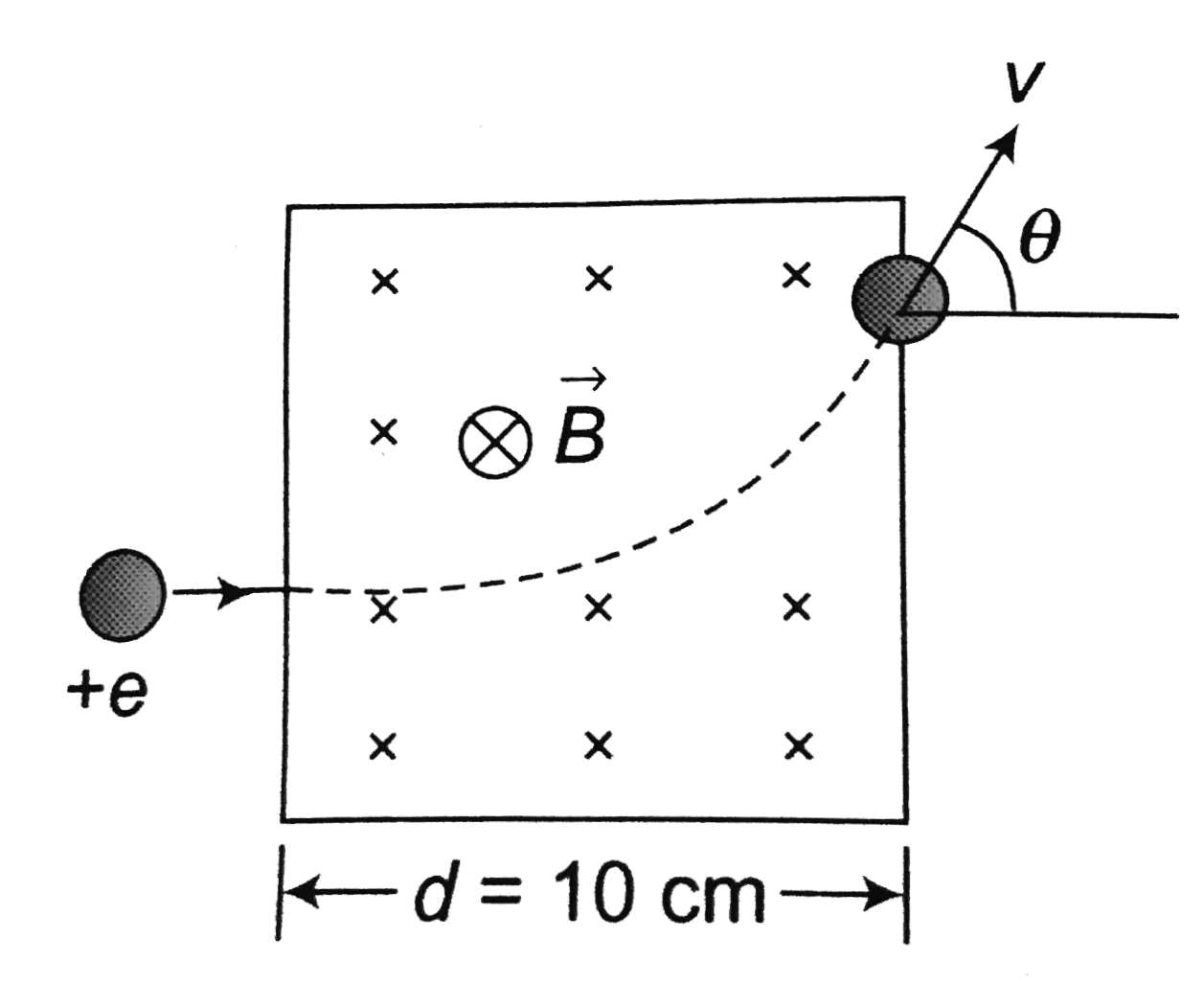A proton accelerated by a potential difference moves though a transverse field of as shown in figure. The angle through which the proton deviates from the intial direction of its motion is

The correct Answer is:2
and
Topper's Solved these Questions
- MOVING CHARGES AND MAGNETISMBook:NARAYNAChapter:MOVING CHARGES AND MAGNETISMExercise:NCERT Based Questions
Explore 20 Videos
- MOVING CHARGES AND MAGNETISMBook:NARAYNAChapter:MOVING CHARGES AND MAGNETISMExercise:LEVEL-V (SINGLE ANSWER QUESTION)
Explore 85 Videos
- MOVING CHARGES AND MAGNETISMBook:NARAYNAChapter:MOVING CHARGES AND MAGNETISMExercise:Level-II(C.W)
Explore 63 Videos
- MAGNETISM AND MATTERBook:NARAYNAChapter:MAGNETISM AND MATTERExercise:EXERCISE - 4 (SINGLE ANSWER TYPE QUESTION)
Explore 17 Videos
- NUCLEAR PHYSICSBook:NARAYNAChapter:NUCLEAR PHYSICSExercise:LEVEL-II-(H.W)
Explore 9 Videos
Similar Questions
A proton accelarted by a potential differnce V=500kV fieles through a unifrom transverse magnetic filed the induction B=0.54T. The field occupies a region of space d=10cm in thickness (Fig). Find the angle α through which the proton deviates from the initial direction of its motion.

View SolutionA particle accelerated by a potential difference V flies through a uniform transverse magnetic field with induction B. The field occupies a region of space din thickness. Prove that the angle a through which the particle deviates from the initial direction of its motion is given by.
α=sin−1(dB√q2Vm)
where m is the mass of the particle.
View Solution
Knowledge Check
A proton of mass m and charge q is accelerated by a potential difference V in a perpendicular magnetic field B occupying space t. The value of sinθ where θ is deviation of proton from initial direction is
ABt√q3VmBBt√q2VmCBt√2qVmDBt√qVmA proton is accelerated from rest through a potential of 500 volts . Its final kinetic energy is
A50eVB500eVC1000eVD2000eVA proton is accelerated from rest through a potential of 500 volts . Its final kinetic energy is
A−50eVB500eVC1000eVD2000eV
(a) A charged particle having mass m and charge q is accelerated by a potential difference V, it flies through a uniform transverse magnetic field B. The field occupies a region of space d. Find the time interval for which it remains inside the magnetic field.
(b) An α-particle is acceleration by a potential difference of 104V. Find the change in its direction of motion if it enters normally in a region of thickness 0.1m having transverse magnetic induction of 0.1T.
(mα=6.4×10−27kg).
( c) A 10g bullet having a charge of 4μC is fired at speed of 270m/sec in a horizontal direction. A vertical magnetic field of 500μT exists in the space. Find the deflection of the bullet due to the magnetic field as it travels through 100m. Make appropriate approximations.
View SolutionA proton is accelerated through a potential difference V, subujected to a uniform magnetic field acting normal to the velocity of the proton. If the potential difference is doubled, how will the radius of the circular path described by the proton in the magnetic field charge ?
View SolutionA proton is accelerated through a potential difference V, subjected to a uniform magnetic field acting normal to the velocity of the proton. If the potential difference is doubled, how will the radius of the circular path described by the proton in the magnetic field change?
View SolutionAn electron accelerated by a potential difference V=1.0kV moves in a uniform magnetic field at an angle α=30∘ to the vector B whose modulus is B=29mT. Find the pitch of the helical trajectory of the electron.
View SolutionA proton accelarted by a potential differnce V gets into the unifrom electric field of a paralallel-plate capacitor whose plates extended over a length l in the motion direction. The field strenth varies with time as E=at, where a is a constant. Assuming the proton to be non-relatistic, find the angle between the motion directions of the proton before and after its fight throgh the capacitor, the proton gets in the field at the moment t=0. The edge effects are to be neglected.
View Solution